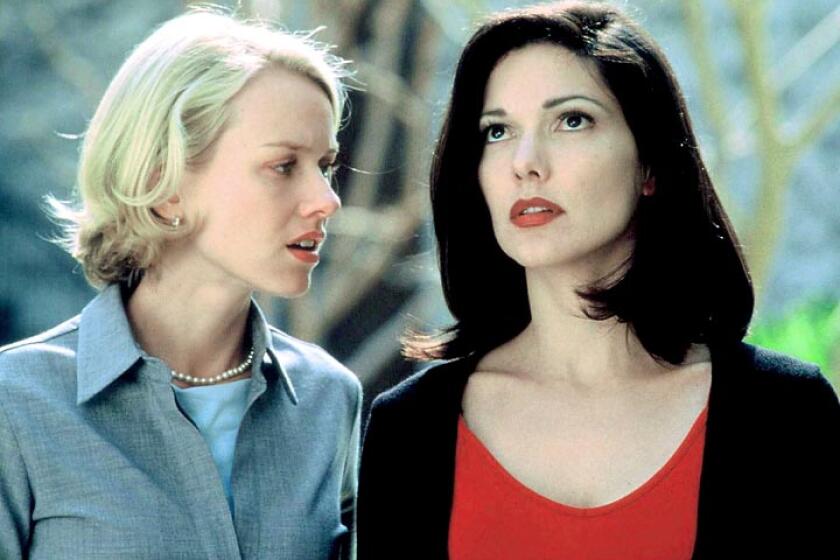‘Rewilding the World’ by Caroline Fraser and ‘Coyote at the Kitchen Door’ by Stephen DeStefano
- Share via
Rewilding the World
Dispatches From the Conservation Revolution
Caroline Fraser
Metropolitan Books: 402 pp., $28.50
Coyote at the Kitchen Door
Living With Wildlife in Suburbia
Stephen DeStefano
Harvard University Press: 224 pp., $24.95
“Over the years, coyotes ate many of Michael Soulé’s cats.”
So begins Caroline Fraser’s engaging new book, “Rewilding the World: Dispatches From the Conservation Revolution.” Soulé, a prominent biologist, discovered that where human and coyote populations overlap, the droppings -- “scats” -- of one in five coyotes contained domestic cat fur.
It wasn’t, however, just anxiety over his cats that prompted Soulé to research coyotes in the canyons outside his native San Diego. As the canyons were declared “empty wastelands” by developers and chopped into housing developments, Soulé worried over the dissolution of a unique ecosystem.
He found, not surprisingly, that numbers of native birds -- wrentits, spotted towhees, California quail -- were decreasing. He also discovered something surprising, and perhaps counterintuitive on the surface: In canyons where coyotes persisted, the bird populations were more robust. Coyotes, it turned out, controlled not just their own prey but also other predators (like cats) with different prey bases (like birds), thus affecting populations of animals with which coyotes don’t normally interact.
In Soulé’s studies, Fraser finds a parable for the salient biological insight of the 20th and 21st centuries: connection.
“Biologists have begun to understand that nature is a chain of dominoes,” she writes, “if you pull one piece out, the whole thing falls down. Lose the animals, lose the ecosystems. Lose the ecosystems, game over.”
The beautiful word “rewilding” was coined by Soulé and fellow biologist Reed Noss more than a decade ago. As a discipline, rewilding goes beyond popular conservation tactics to recognize that true conservation must focus much more broadly on an intimate understanding of ecological connection. Fraser tells us that the rewilding philosophy can be boiled down to three words: cores (the continent-scale preservation of whole ecosystems, not mere fragments); corridors (links between the cores that allow wildlife to safely migrate and disperse); and carnivores (supporting ecosystems healthy enough to maintain thriving populations of large carnivores in their important role as regulators of predators and prey). Rewilding is, of necessity, a global, trans-boundary, trans-cultural endeavor.
With this book, Fraser does for rewilding what David Quammen did for island biogeography in his seminal “The Song of the Dodo.” Fraser uses lucid prose, engaging stories and personal experience to make the ideas accessible and vital to a wide audience. This is no dreary rehearsal of past eco-errors and present concerns. Fraser takes us far beyond San Diego, straight into the lives of African elephants, Australian lizards and a Russian bear that intruded upon the Olympic Games, sitting on the sidewalk while languidly consuming a young girl’s pet rabbit. “We are so close,” Fraser says, and we require just a strong nudge in imagination and social engagement to make the rewilding dream real. With this lovely, necessary book, we step closer to that ideal.
In “Coyote at the Kitchen Door: Living With Wildlife in Suburbia,” wildlife biologist Stephen DeStefano portrays the coyote as an American icon -- a pioneer and survivor, one that represents “nature returning to us, uninvited and unexpected.” Coyotes are big carnivores that have found a way to flourish at the edges of human habitations. If we keep our eyes open, they allow us thrilling glimpses into a wilder world -- fur-filled scat on the sidewalk (um, has anyone seen Fluffy today?), rangy limbs disappearing into the trees at the edge of a new development. We are simultaneously exhilarated and unsettled by such sightings.
In the original dream of suburbia, our homes were supposed fortresses, built to insulate us from the unstable whims of “nature.” But, as DeStefano writes, the “realization that wildlife is truly a part of the suburbs has crept up behind us while we were out watering the lawn.” Willing or not, we find ourselves co-inhabitants with various rodents, birds, insects and perhaps bats. The dog bowl on the back porch is visited by raccoons and -- yes, maybe -- coyotes. DeStefano weaves personal stories of his own wild encounters with scientific evidence on the negative effects that light, noise, traffic, road building and other human activities have on the wild animals in our midst. As the book unfolds, readers are drawn into his questions and are called to rethink “our overwhelming occupation of the landscape.”
Both books invite us to consider, and reconsider, the modern human relationship to other beings in a wild, wonderful and ecologically imperiled world, and to remember that our participation in this world involves not just guilt, worry, science and activism, but also a capacity for imagination. Fraser bookends her narrative with the famous story of Madagascar’s night-blooming orchid, a flower with a deep nectary that prompted Charles Darwin to foretell the existence of a nocturnal pollinator.
It was 40 years after Darwin’s prediction that a moth with a shockingly long proboscis was discovered feeding from the flower and named, in honor of those who had imagined it, the Predicta moth. Nature is like this orchid, Fraser tells us: “Unique, fragile, locked in a relationship with a transient being on which it is utterly dependent: Ourselves. We flew away for a while, thinking we could leave the natural world behind. But our destinies evolved together. We will survive only in a world as complex and biodiverse and interdependent as the one that created us.”
Haupt is the author of “Crow Planet: Essential Wisdom From the Urban Wilderness.”
More to Read
The biggest entertainment stories
Get our big stories about Hollywood, film, television, music, arts, culture and more right in your inbox as soon as they publish.
You may occasionally receive promotional content from the Los Angeles Times.









